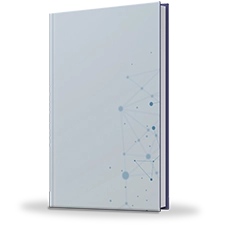Self-levelling concrete is a polymer-modified cement that does not need large amount of water for placement. It is used to create smooth flat surfaces with very high compressive strengths. It can be installed on the top of concrete, ceramic tile, and plywood. In addition to flooring, self-levelling concrete is popular for countertops. It is compatible with limestone aggregates. The demand for self-levelling concrete has increased as the degree of smoothness and flatness required for floor covering products has increased. The advantages of self-levelling concrete technology are a reduction in man hours and a major cost savings. Homes and business establishments alike can benefit from the use of self-levelling concrete.
The factors such as increased demand from construction sites such as restaurants, educational institutes, and residential complex are expected to drive the growth of the global self-levelling concrete market. Furthermore, the rapid industrialization in developing countries such as India and China are expected to boost the growth of the market. However, variation in prices of raw materials and low adoption rate among users hamper the growth of the market for the forecast period. Moreover, increase R&D activities for the improvement in the properties of self-levelling concrete to make it more efficient is anticipated to provide lucrative opportunity for the market growth, globally.
The market is segmented on the basis of material, application, and region. Based on material, the global self-levelling concrete market is segmented into underlayments and toppings. On the basis of application, it is divided into residential and non-residential. Region wise, the market is analyzed across North America, Europe, Asia-Pacific, and LAMEA.
The major key players operating in the global self-levelling concrete market are Duraamen Engineered Products, Inc., Arkema S.A., ARDEX Group, Mapei S.p.A., The Quikrete Companies, Inc., LafargeHolcim, Saint-Gobain, Durex Coverings, Inc., Durabond Products Limited, and Harricrete Ltd. These major companies are adopting a number of strategies such as product launch, research, and developments to maintain their position in the market. In an instance, ARDEX Group jointly with Wakol strengthens its position in Australia by acquiring majority stake in Nexus Adhesives on April 2019. Saint-Gobin innovated design flooring solutions with the use of self-leveling concrete in 2015.
Key Benefits for Self-Levelling Concrete Market :
- This report provides a detailed quantitative analysis of the current Self-Levelling Concrete Market trends and estimations, which assists to identify the prevailing opportunities.
- An in-depth Self-Levelling Concrete Market analysis of various regions is anticipated to provide a detailed understanding of the current trends to enable stakeholders formulate region-specific plans.
- A comprehensive analysis of the factors that drive and restrain the growth of the Self-Levelling Concrete Market is provided.
- Region-wise and country-wise market conditions are comprehensively analyzed in this report.
- The projections in this report are made by analyzing the current trends and future market potential in terms of value.
- An extensive analysis of various regions provides insights that are expected to allow companies to strategically plan their business moves.
- Key market players within the market are profiled in this report and their strategies are analyzed thoroughly, which help to understand the competitive outlook of the global Self-Levelling Concrete Market
Self-Levelling Concrete Market Report Highlights
| Aspects | Details |
| By Material |
|
| By END APPLICATION |
|
| By Region |
|
| Key Market Players | Arkema S.A., Duraamen Engineered Products, Inc., Mapei S.p.A., ARDEX Group, The Quikrete Companies, Inc, Harricrete Ltd., Durex Coverings, Inc., Durabond Products Limited, LafargeHolcim, Saint-Gobain |
Loading Table Of Content...



